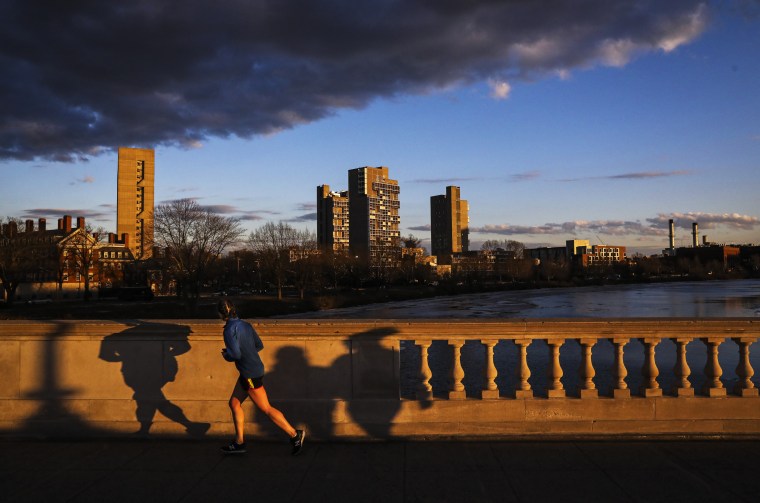Faced with unusually hot weather and wildfires in the middle of February, Orange County Fire Authority Chief Brian Fennessy told reporters that California “no longer [has] a fire season, we have a fire year.” This statement comes on the heels of an extremely dry January and a December that was marked by mosquitoes’ flying around me in the 60-degree Washington, D.C., weather.
Living in a world affected by climate change is a part of our daily reality. It is what climate scientist Katharine Hayhoe refers to as “global weirding.”
Living in a world affected by climate change is a part of our daily reality. It is what climate scientist Katharine Hayhoe refers to as “global weirding.” All last year effects were glaringly present, from heat extremes over the summer to a record hurricane and wildfire season and, now, to warmer winter temperatures that are marked by winter mosquitoes and wildfires.
While the change in seasons is confusing, to say the least, what is most concerning to me, as a physician, is what this warmer weather means for public health.
Let’s take mosquitoes, for example. Most species of mosquitoes thrive in temperatures from 59 to 89 degrees Fahrenheit. In many parts of the U.S., warmer temperatures and changing precipitation patterns are contributing to a lengthening of the mosquito season. I asked a colleague, Dr. Hana Akselrod, an infectious disease doctor and assistant professor of medicine at the George Washington School of Medicine and Health Sciences, what this means for public health. “The lengthened mosquito season increases risk of transmission of West Nile virus, which is endemic to most of the U.S.,” she told me.
And Akselrod noted that across the Southeast U.S. and the Gulf Coast, the concerns of climate change are even greater. Global warming contributes to a habitat that is more hospitable to the Aedes mosquito, the vector that can carry the dengue, chikungunya and Zika viruses. While these viruses are endemic in the Caribbean region, Akselrod believes that “climate change increases the risk of them getting established in the United States.”
And of course, mosquitoes are just one small, bloodsucking piece of a growing public health crisis. The recently released Lancet countdown on health and climate change calls climate change a “code red for a healthy future,” and a joint editorial from more than 230 medical journals published in September calls for “emergency action” to limit global warming.
And of course, mosquitoes are just one small, bloodsucking piece of a growing public health crisis.
A woman in Canada was diagnosed as suffering from “climate change.” Air pollution and summer heat wave exposure were identified as contributory factors to her breathing complications, triggering the novel diagnosis. She is believed to be the first person to receive this diagnosis, but she will not be the last.
Patients like this are a reminder why environmental action is key to protecting health. An estimated 85 percent of the global population lives in areas affected by climate change, according to a study published in the journal Nature Climate Change. In the U.S., environmental racism has contributed to higher levels of heat exposure for people of color living in urban areas, placing these communities at greater health risk because of disproportionate exposure to the hazards of extreme heat. While it is a seemingly small variation, each degree Celsius of warming increases the number of heat extremes future generations will be exposed to and increases the risk of heart attacks, strokes and pregnancy complications.
Last fall, a study from the Yale Program on Climate Change Communication reported that 70 percent of Americans are “very” or “somewhat worried” about global warming. We need this 70 percent to translate their worry into action-raising awareness about the need for local and national climate action and keeping our elected officials accountable for passing environmental legislation. Without this push, climate legislation is at risk of being neglected, as evidenced by the persistent lack of passage of the historic climate provisions in the Build Back Better Act.
As primatologist Jane Goodall says: “The greatest danger to our future is apathy.”
The Mountain Valley Pipeline, a natural gas pipeline, has faced major pushback from conservation and environmental justice groups for years over significant concerns about heat-trapping emissions and air and water pollution. In January, in a win for those who have fought the pipeline, the project lost an appeal for a permit to cross through Jefferson National Forest. In December, the Virginia Air Pollution Control Board voted to deny an air permit for a proposed compressor station. These denials are what climate action that protects health looks like. This is the type of change the 70 percent of us who are “very” or “somewhat worried” about global warming must push for.
Because only with more successes like these can we avoid diagnosing more and more people with climate change and not be stuck watching the “winter mosquitoes” fly around us.
CORRECTION (March 4, 2022, 6:00 p.m. ET): A previous version of this article misspelled the first name of an expert on so-called global weirding phenomenon. She is Katharine Hayhoe, not Katherine Hayhoe.

